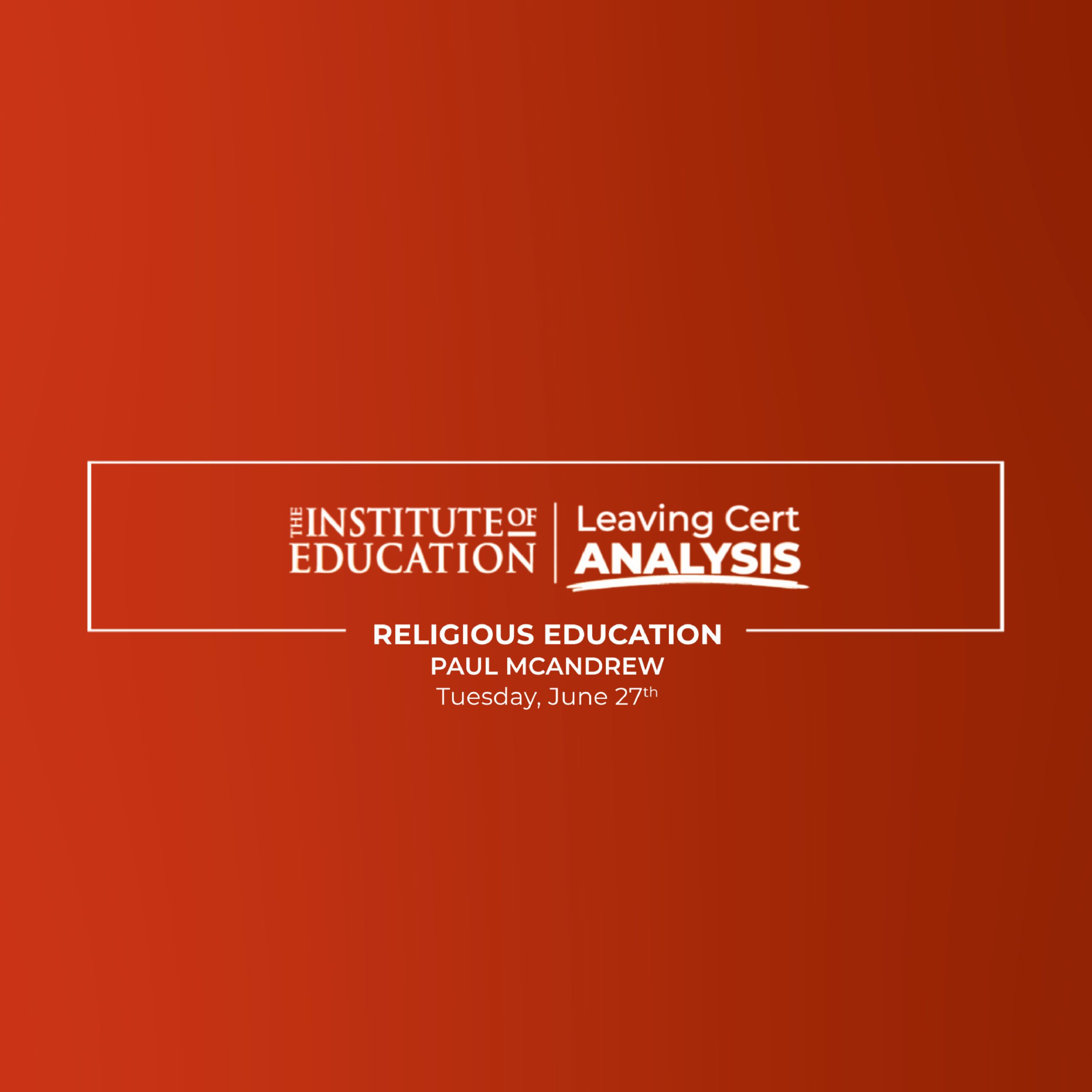Reaction to Leaving Certificate 2023 Religious Education (Higher Level) by Paul McAndrew, Religious Education teacher at The Institute of Education.
- A fair paper that challenged students to apply their knowledge to new and novel tasks.
- The marking scheme of some questions might throw some students – some questions offered only 20 marks for big topics, while 80-mark questions returned after a long absence.
The Religious Education paper emphasized the application of knowledge. Students are not only required to study a broad range of topics, perspectives and faiths, but they must also be able to adapt those topics in manners that show a more profound grasp than mere recitation.
Unit 1 examined the area of the course titled “The Search for Meaning and Value”. Q1 (a) focused on Plato’s philosophy on the nature of reality. Many students find this a hard topic to fully grasp, so some may struggle to clearly articulate this in a concise manner. There were only 20 marks available for this outline meaning that students needed to be succinct in their account. The latter part of the question asked students to apply the theory to a modern audience, thus showing a vitalised approach to the ideas. Q1 (b) nicely balanced the Classical Philosophy with the development of the humanist tradition, again asking students to apply ideas to the world today. Q2 focused on the influence of divine revelation, and the indifference to the search for meaning. These questions were much more straightforward and, at 40 marks, gave students more freedom to allocate time to explore ideas.
Unit 2 asked students to answer two questions from Christianity, World Religions, and Moral Decision-Making. Most of the questions were fair and straightforward but those answering on “Primal Religion” will be frustrated at being constrained to only 20 marks for such a big topic. A strong student would have adhered to a 9-minute limit for this question and not let themselves get distracted with the potential quantity to write. This section also saw the surprising return of “founding story festivals” which have not been examined for a number of years. The question was fair, but its phrasing might have caught a few off guard, so students needed to be precise in dealing with festivals in particular.
The final section, Unit 3, is a great part of the syllabus with some of the most fascinating topics on the course. Students could write on Religion and Gender, Issue of Justice and Peace, Worship, and The Bible as both literature and scripture. There was a great variety of questions within each section, so students could easily navigate by their strengths and interests. One thing of note was the return of 80-mark questions to the paper. In recent years the tasks have been two parts of 40 marks each. While the relevant content remains the same, the change in marking might trouble some students. However, the exam is all about adapting and thinking through the material so stronger students should have no problem with this.
Overall, the exam was thoughtful, thought-provoking, and fair. The subject encourages students to critically apply their knowledge of the material and this exam rewards those that embraced that ethos.

